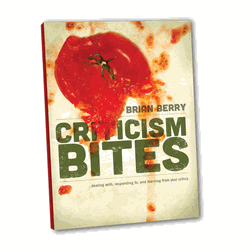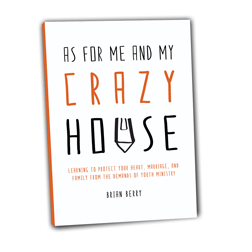I confess, I have become a bit of a prop guy when teaching or preaching. In fact, if you count pictures on a projector as a prop, I’d say there’s close to a 95% chance that there will be a prop somewhere in my teaching. If you fly me in to teach, I’ll probably bring my own props as well as ask you to pick some up whatever I could not carry or was too bulky to bring.
- Take a regular milk and pour it into a clear glass. Tell them this is their life. (If your crowd is big, feel free to use a vase or other large cylinder that can be seen from farther away)
- Then take hershey’s chocolate syrup and pour it in. Tell them the syrup represents Jesus. (You can have fun with Jesus being brown skinned or sweet tasting or just full of goodness if you want) But the point I make is this: a lot of people claim to have Jesus in their life… and they might not even be wrong.
- Then point out the pile of chocolate syrup in the bottom and draw the analogy that the problem isn’t that they have no Jesus in them, it’s that you have to look in the right place to see or taste Him.
- I show them that if I cover up the chocolate syrup pile that forms in the bottom of the glass, then no one can tell if there’s chocolate in it or not. The same is true of a lot of “christians”. They don’t look or taste like they have Jesus in them in about 95% of the environments they’re in.
- So I then tell them that if we want to have God in every piece of our lives, then we each have to stir up some stuff and at which point I use a spoon to stir up the chocolate.
This is a perfect illustration of the filling of the Holy Spirit and never ceases to prove powerful every time I use it. But without the visuals, it’s so less impactful. I could explain it, but seeing it live is 100x better. It just is.

 Husband. Dad to 5. Student Ministry Pastor. Follower of Jesus. Yatta yatta.
Husband. Dad to 5. Student Ministry Pastor. Follower of Jesus. Yatta yatta.



Great post…I love visuals for the exact reason you stated…they are memorable and usually help students to remember the lesson tremendously…We talked Wednesday night on hearing God speak to us and knowing His voice from all the others we face daily…for that lesson I actually used an illusion where the King of Hearts (Because He’s King of my Heart) tells me what the card on the table is…they were blown away and it made for a great illustration! Thanks for sharing!
I continually work at the craft because of your example, bro. I love seeing the power of a picture making truth come to life. Thanks for convincing me!
Good call. As a visual learner myself, I love to teach with objects or video clips. I find that visuals are not only fun but the knowledge taught can be retained longer.
I’m a visual learner (probably why I dropped out of high school). Thanks for the reminder of how important a visual is!